The customer experience does not end when a service is completed—at least, not when you have a good post-project follow-up practice.
These follow-ups, also known as happy calls, help to retain customers and increase your chances of getting reviews and referrals—which is why we want to make sure you’re fully equipped for the task. From automating your outreach, to providing the script, we’ve got you covered.
Read on for 21 happy call scripts and responses you can use in your post-project follow-ups!
Table of contents
What are happy calls?
Before we get into the scripts, let’s go over what happy calls are. Happy calls are a form of follow-up after a job has been completed to check in with the customer on their satisfaction.
Happy calls serve as a way to make sure jobs were completed correctly, catch any issues with a job early, and can even serve as a means of requesting a formal review. In general though, the goal of a happy call is to make sure the customer is, as the name suggests, happy with the service.
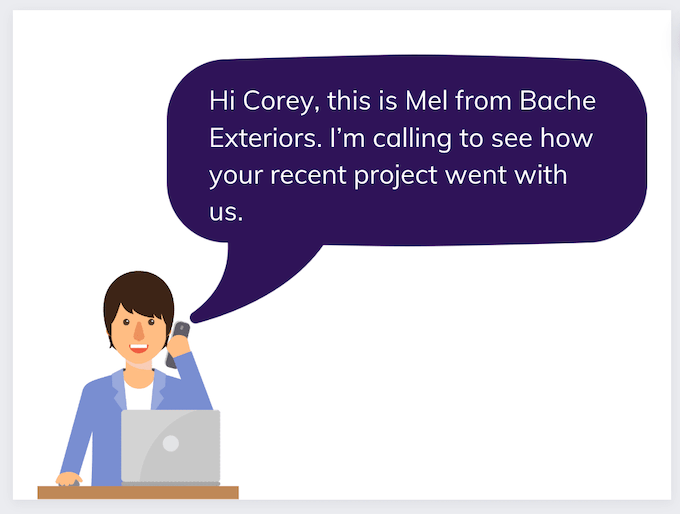
There isn’t necessarily a perfect time to conduct a happy call. Some organizations make a point to do happy calls immediately after a job is completed. Others will wait two or three days before calling the customer.
Happy call scripts and responses for contractors
No phone call is 100% predictable but a happy call can follow a predictable pattern. Having an official happy call script for your business will help in training your employees as well as keeping the service follow-up as professional as possible.
Scripts for initiating the conversation
Here are some options for introducing yourself to the customer:
- Hello, my name is [insert name] from [your company]. I’m calling to see if you have any questions or concerns about our recent [service] as well as get any feedback you have. Do you have a moment?
- Hello, my name is [insert name] from [your company]. I’m calling to thank you for allowing our technician [name] to come to your home to [provide service] and make sure everything is running to your satisfaction.
- If negative, ask if a later time would work for them or thank them for their time and end the call.
- If affirmative, you can continue with the script
To move forward with the conversation:
Great! First and foremost, thank you for using [company name] for [service]. Do you have any immediate questions or concerns you’d like to share?
-
- If affirmative, resolve those first.
- If negative, proceed with the script
To start collecting feedback:
- We like to ask our customers a few questions to make sure we’re providing the best services possible. Mind if I ask those questions?
- Our goal is to provide five-star experiences and we're always looking to improve. Would you mind if I asked a few short questions to get some feedback from you?
Here are some of the questions you can ask
- On a scale of 1-5, with 5 being best, how would you rate our services?
- Did you have a positive experience with the technician?
- Do you have any feedback about the customer service you received from our staff?
- Would you recommend us to a family member or friend?
- Did our technician explain how you could have save X% on your repair? [Mention your membership program]
How to end the conversation:
- [Customer name], thank you for your time and feedback today. We appreciate your business and look forward to you using our services again.
It’s important to train for a predictable conversation flow. Just don’t forget to train your representatives in responding to both positive and negative feedback. Those responses can be scripted too, which is what we cover next.
Scripted responses for positive feedback
If you start with or get consistent positive feedback from the customer on a happy call, that’s great! But that doesn’t mean the customer experience should end there.
A happy customer is the customer you are most likely to keep. They’re also more likely to be willing to give you an official online review, refer their friends, and so on.
Here are some scripts you can use for when you have a positive happy call:
- Thank you so much for the feedback and we are so glad everything went well. Would you like/be willing to…
- Leave a review for us on our Yelp/Google/other review page? [if yes] Great! We’ll send the link over to you after this call for your convenience. [if no] No problem. We understand and appreciate your time.
- Sign up for our referral program? It benefits both you and whomever you refer. I can also send you more information after this call.
- Schedule your next appointment with us? We provide preventative maintenance services so you don’t have to worry about when you should have things checked out again. [this can be specified based on your service offerings]
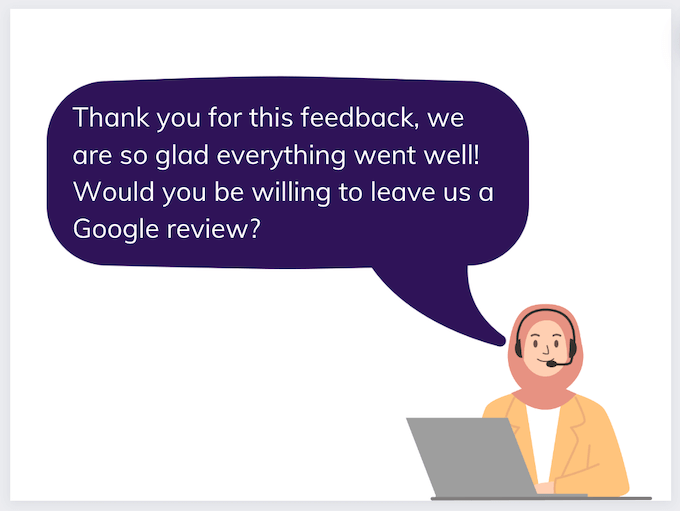
Wonderful! Thank you so much for your time and we look forward to serving you again in the future.
If you agreed to send the customer further information or a link of some sort, follow up on those deliverables as soon as possible to maintain that customer's confidence. All of these conversation options are customizable based on your offerings too, so be sure to have any information on your company’s options ready ahead of time.
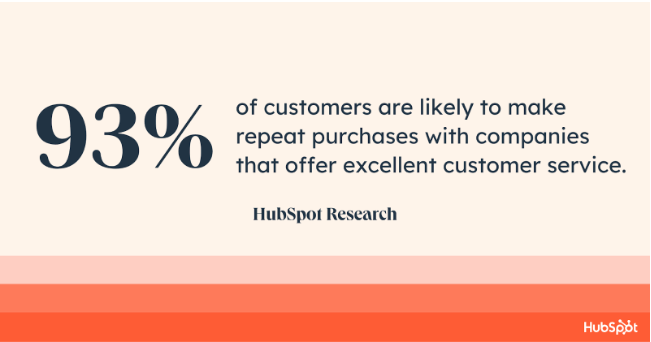
Image source
Scripted responses for negative feedback
On the flip side, if you have a customer on the line that has negative feedback for you in one or more areas, that doesn’t mean you shouldn’t continue the call.
This is your opportunity to earn the customer’s trust and (hopefully) win back their business. This is when customer communication skills are most important.
Listening with intention and acting on their feedback in a way that shows you care about your quality of service can be the difference between keeping a loyal customer or having to look for new leads.
Here are some scripts you can use for when you have a negative happy call:
- Thank you so much for the feedback. We apologize things didn’t meet your standards this time around and that certainly doesn’t sound like it meets our service standards either. To make it up to you/make it worth your while…
- Let us refund your service and provide a discount for your next appointment with us.
- Let us come back out to fix the issue. There won’t be any additional charges and we’ll send [insert technician’s name] out to oversee the whole process. They are our most experienced technician so they can answer any questions you may have as well.
- We’ll give you our special discount for your next service. This will include [insert any special features or offerings].
- Again, we’re so sorry about this. We hope this helps and we will absolutely work to resolve this issue and prevent it from happening in the future. We hope to work with you again in the future. Have a wonderful day and, again, thank you for bringing this to our attention.
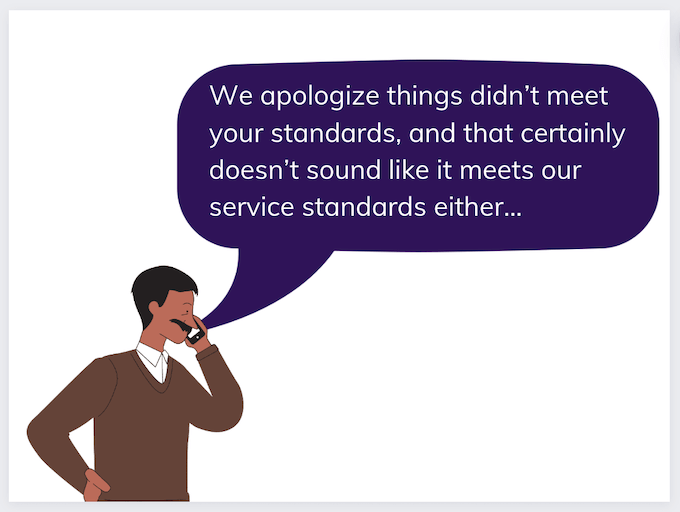
Just like with a positive happy call, if you agreed to send the customer further information or a link of some sort, follow up on those deliverables as soon as possible. This will help to maintain or restore that customer’s trust. Of course, not every issue can be resolved in the same manner, so pick the approach that works best for you and your customers.
These negative calls can also help bring real issues to light, so take this feedback as seriously as you would take the positive feedback and see if it’s something you can resolve and implement for your future services.
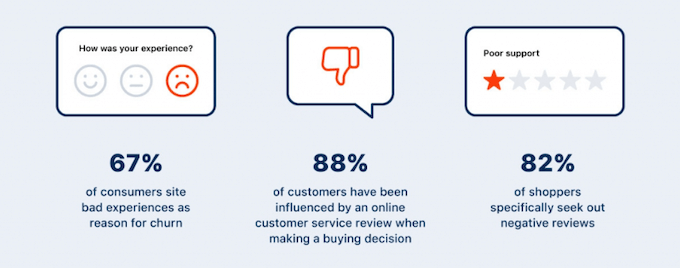
Image source
And, like the other scripts, these options are customizable to your conflict resolution offerings and options. So have a plan ready for if things don’t follow the ideal path.
Happy call best practices
As with any customer service, happy calls have a few best practices that need to be accounted for when training your representatives.
While scripts assume things will go as expected, there are some things your team can do no matter what to help ensure the call goes as well as it can. Here is a quick list of best practices you can train for:
Make sure to call within five business days
This way the customer can have the job fresh in their mind and you don’t let them feel forgotten or ignored.
Have responses ready for both positive and negative feedback
This way your customer service team can be prepared to get traction for either continued service and customer loyalty; or to identify a problem if the response is negative that can be solved for. Be it over the phone or on a review site, it’s important to actively respond to all kinds of customer feedback.
Be proactive and direct
This means knowing the service the customer was supposed to receive and asking about specifics. Just like in lead calls, research should be done prior to making the call.
Focus on a key point the customer mentioned
Phone calls are dynamic. So even with a script, there are bound to be things that come up during the call that diverge from expectations every now and then. In those cases, focus on something specific the customer mentioned.
This tells the customer you’re being attentive and that you truly care about their specific feedback.
End with an action item
Whether it’s to a review site, a new order page on your website, or a different customer support representative, having the call end with more than just a “thank you for your time” helps to set up the customer for future engagements.
Retain more customers with better happy calls
Not every script will work for every business or customer, but these are good places to start. Take these templates and adapt them to your specific customer use cases or service options.
Just like reaching out to a customer first increases your chances of them becoming your customer, following up after a job increases the likelihood of that customer staying with you for future business services. If you want to know how Hatch can help you keep up with happy calls, schedule a 15-minute demo or watch our demo video now.